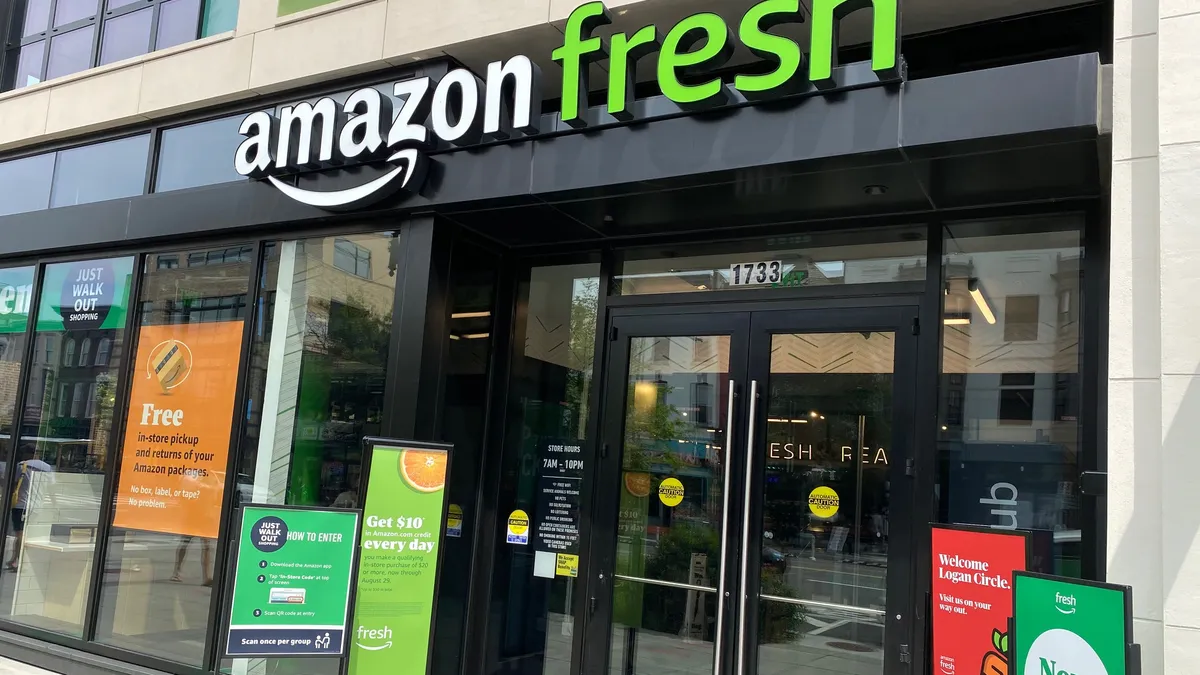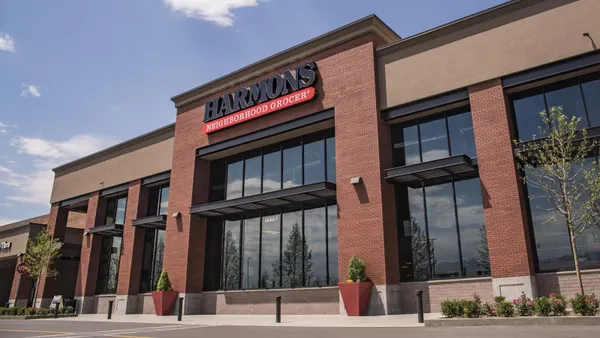Dive Brief:
- Amazon has introduced an analytics tool that allows CPGs to track shopper interest in products they sell in Amazon Go and Amazon Fresh stores equipped with frictionless checkout technology, the retailer announced in a blog post Wednesday.
- The new service, known as Store Analytics, will provide suppliers with “aggregated and anonymized insights” collected by Amazon’s Just Walk Out and Dash Cart systems about how customers interact with items and whether they purchase them, the company said.
- Amazon is stepping up the utility of its automated shopping technology as the company expands its fleet of brick-and-mortar grocery stores.
Dive Insight:
Amazon’s latest tool for marketers shines a spotlight on the ability of the computer vision-based technology it has been rapidly rolling out to scoop up granular data about in-store shopping behavior.
As they have long been able to do online, CPGs will be able to use Store Analytics to discern connections between how and when shoppers in Amazon’s stores encounter their products and whether they decide to buy them. The information will permit suppliers to guide merchandising strategies, develop promotions and determine which items to offer, Amazon noted in the blog post.
For example, brands will be able to know the percentage of people who take one of their products off the shelf and then buy it either during the store visit or later on Amazon’s website.
The platform will allow suppliers that display ads in Amazon Go or Fresh stores to connect those messages with metrics about their performance, which Amazon said will enable companies to “evolve and refine their assortment, merchandising, and advertising over time.”
The company said in March that it would close its bookstores, 4-star and pop up locations and instead concentrate its physical retailing efforts on its Whole Foods Market banner, Amazon Fresh supermarkets, Amazon Go convenience stores and Amazon Style clothing stores.
Amazon emphasized that it will not provide suppliers with data that could be linked with specific shoppers and will allow customers to prevent data about their activities from being harnessed by the analytics platform. The retailer added that it will not share the images or video it collects in the process of tracking and matching shoppers and products in its stores.
Amazon also said it does not plan to let product suppliers use the platform to target advertising.
Beyond using data about how people behave in Amazon’s stores to drive sales, Amazon also intends to use the information to guide decisions about how its locations are organized.
“These insights will help … stores continuously improve the shopper experience by making the store layout easier for shoppers to find their favorite items and discover new ones, improving selection and availability of products, and delivering great value through relevant promotions and advertising,” the company said in the post.
The new data platform highlights the ability of frictionless checkout technology to provide key business intelligence in addition to a smoother shopping experience. It comes as retailers are investing in new technologies to help them track store performance in ways similar to e-commerce. Twin Cities grocer Lunds & Byerlys, for one, is utilizing software that lets workers track shelf performance using a handheld scanner or mobile phone.













